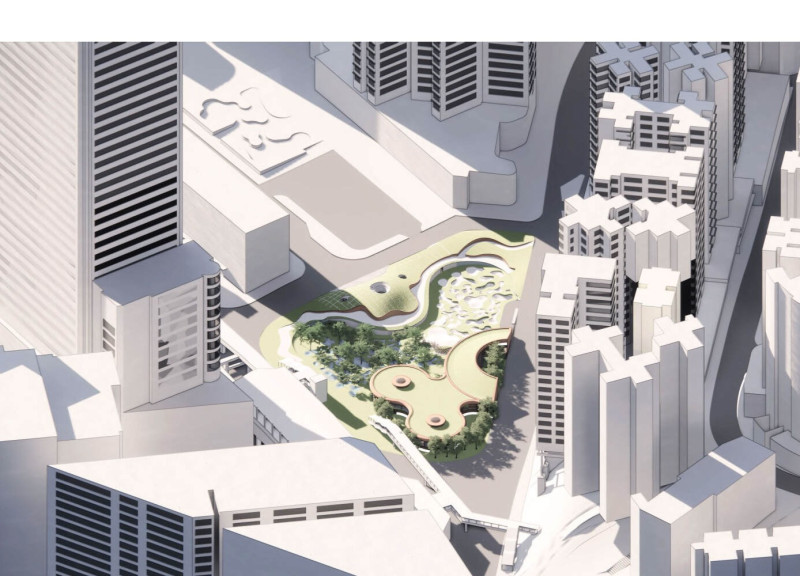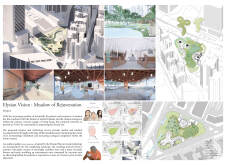5 key facts about this project
In its essence, the project functions as more than just a medical facility; it represents a sanctuary that encourages connections with nature and community. The architectural design embodies the philosophy that healing takes place not only through medical intervention but also through a calming and supportive environment. By thoughtfully incorporating various green spaces, the design allows for a seamless interaction between nature and built forms, fostering a restorative atmosphere for users.
The layout of the project carefully delineates different areas to optimize patient comfort and accessibility. Outdoor gardens serve as the heart of the complex, featuring a diverse range of plants, trees, and water elements like tranquil ponds that enhance the sensory experience. These gardens are not just aesthetic; they are designed to facilitate various therapeutic activities such as walking, meditation, and socializing. Within the building itself, spacious, light-filled areas promote visibility and openness, mitigating feelings of isolation often experienced in healthcare settings.
Another critical aspect of the "Elysian Vision" is the conscious use of materials. The project likely utilizes concrete for its structural elements, complemented by glass panels that create transparency and a connection to the landscape outside. Engineered or reclaimed wood features prominently, particularly in ceiling structures and interior finishes, adding warmth and comfort to the environment. Such material choices reflect a commitment to sustainability and ecological sensitivity, aligning with contemporary architectural practices that seek to minimize environmental impact.
One of the unique design approaches taken in this project is the integration of landscape and architecture. The design blurs the lines between interior and exterior by incorporating large windows and open spaces that invite natural light, making residents feel connected to their surroundings. This concept not only enhances the healing process but also creates opportunities for social interaction among patients and their families.
Moreover, community integration plays a pivotal role in the project’s layout. Spaces dedicated to communal activities encourage social engagement and support, challenging the traditional perception of hospice care as isolated and somber. Instead, there is an emphasis on creating vibrant, active environments that promote dialogue and interaction among residents, visitors, and staff.
The design aims to diminish the clinical atmosphere typical of healthcare facilities, replacing it with an environment where nature and architecture coexist harmoniously. This integration of natural elements fosters a sense of calm and supports a deeper healing process for individuals within the space.
For those interested in exploring this exceptional project further, reviewing the architectural plans, architectural sections, and detailed architectural designs will provide deeper insights into the thoughtful ideas that underpin the "Elysian Vision: Meadow of Rejuvenation." This architectural endeavor is an invitation for architects, designers, and healthcare professionals to consider the vital role that environment plays in health and wellness, encouraging a broader discourse on the future of urban architecture in healthcare contexts.























